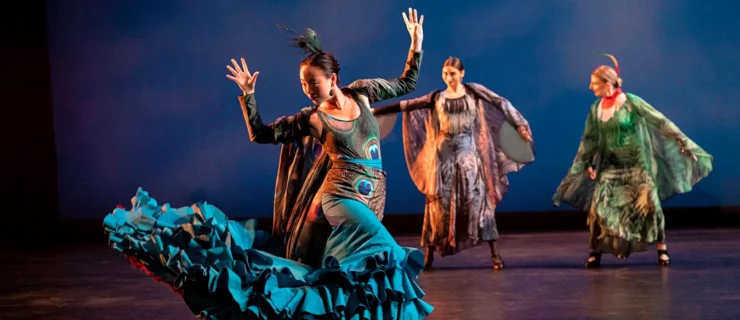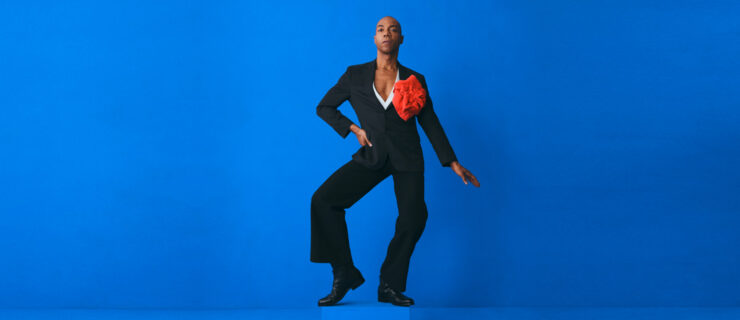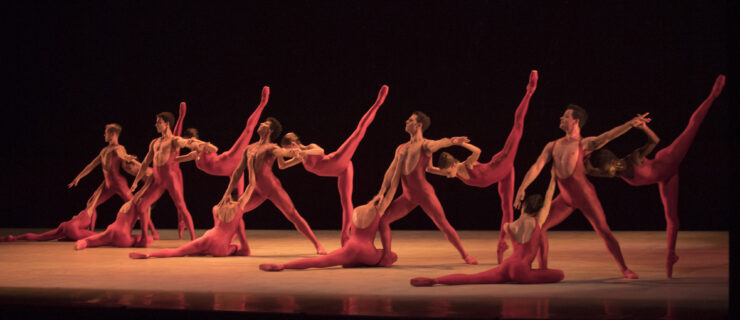Sourcing Stravinsky
Sourcing Stravinsky
Dance Theater Workshop, NYC
April 19–22, 2006
Reviewed by Cynthia Hedstrom
The reference to “sourcing” in the title of this program, curated by Annie-B Parson, is apt. The dances are not so much choreographed to Igor Stravinsky’s music as inspired by this icon of 20th-century classicism.
Yvonne Rainer’s AG Indexical, with a little help from H.M. “sources” the Balanchine/ Stravinsky masterwork Agon. It creates a copy of the original choreography without the heft of the classical tradition—the chiseled line, the cool passion, the weight of history; even Stravinsky’s music is heard via a scratchy recording. What remains? Certainly some tedium. But as images of Balanchine’s work flicker through the mind, the pedestrian copy is rendered comic or poignant. Quotes from Rainer’s own dances slip into the quartet from Agon. Tennis-shoed feet step-step with the quickness of a bourrée while the port de bras dissolve into personal gesture. It’s far from ballet, and yet the ghosted outline of Agon is there. Then Rainer turns the endeavor on its head: The dancers re-perform the quartet to Henry Mancini’s theme from The Pink Panther, bringing home the idea that this is a slightly tongue-in-cheek collection of references.
In a more obvious contextual flip in Heaven, hip hop choreographer Rennie Harris switched the gender of the Chosen One from The Rite of Spring. The low-to-the-ground bodies, crosshatched footwork, and cantilevered horizontal flips of four fierce street women fit perfectly to Stravinsky’s ominous strings and horns, and it’s no surprise when these women easily overpower the quick-footed young man who comes “popping” into their territory.
Seattle-based choreographer Dayna Hanson and filmmaker and performer Linas Phillips pay sly homage to Stravinsky in Track 11. They use a greatest-hits CD compilation and juxtapose footage of the exiled composer with video interviews of homeless men (one of whom seems to remember a lunch that Stravinsky shared with him). Hanson’s simple, movement sequences appear homely against the lush transcendence of Stravinsky’s Symphony of Psalms. Still, their self-consciously simplistic commentary reveals truths about the composer’s life.
David Neumann lifted Stravinsky out of the “dead genius” category in his Hit the Deck (studies and accidents). His advantage was live piano music—Circus Polka and Valse pour les enfants among others—but it was his precision and whimsy that matched the short pieces. Neumann rollicked. Body parts flew through the air; small physical collapses were caught and lifted, all in perfect timing. At one point, Neumann ran onstage and sprinted backwards to snag a chair flying in from another wing. The choreography for his company, Advanced Beginner Group, echoed this playful touch, as did his pianist, Carol Helen Wong.
Completing the program was Tsimtsum, a series of original songs by Cynthia Hopkins, inspired by a contemplated but never written opera that was to be a collaboration between Stravinsky and Dylan Thomas. See www.dtw.org.




